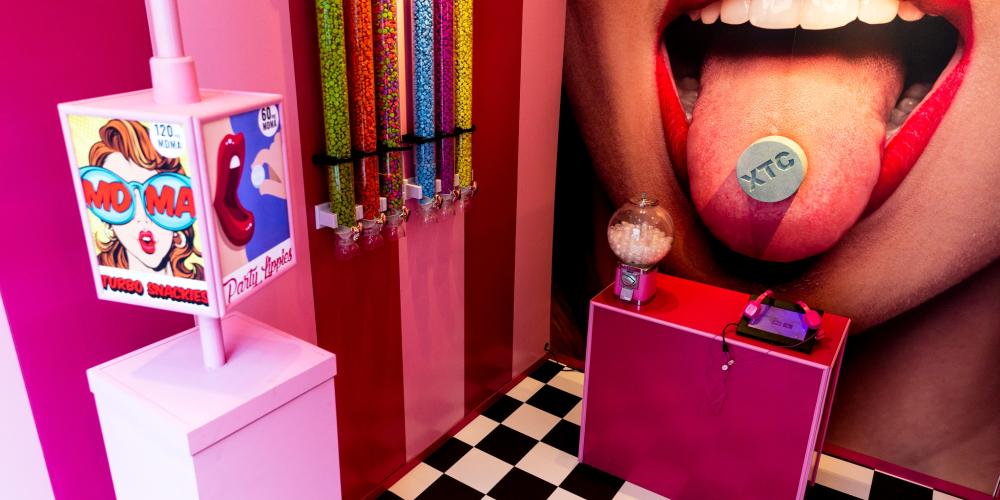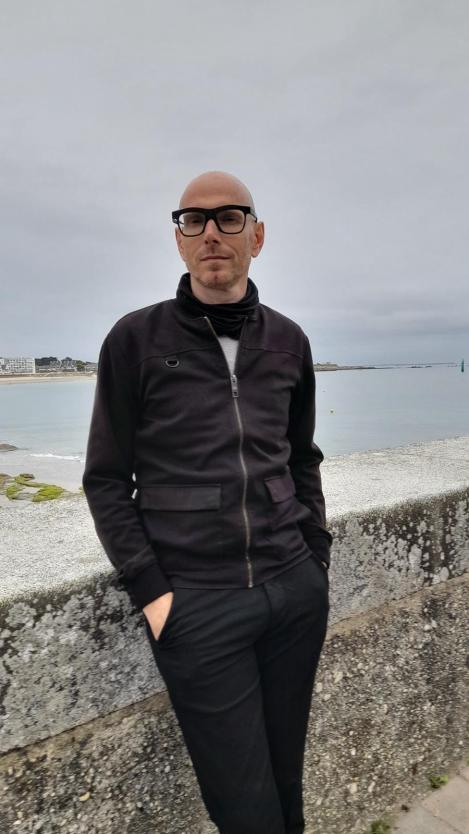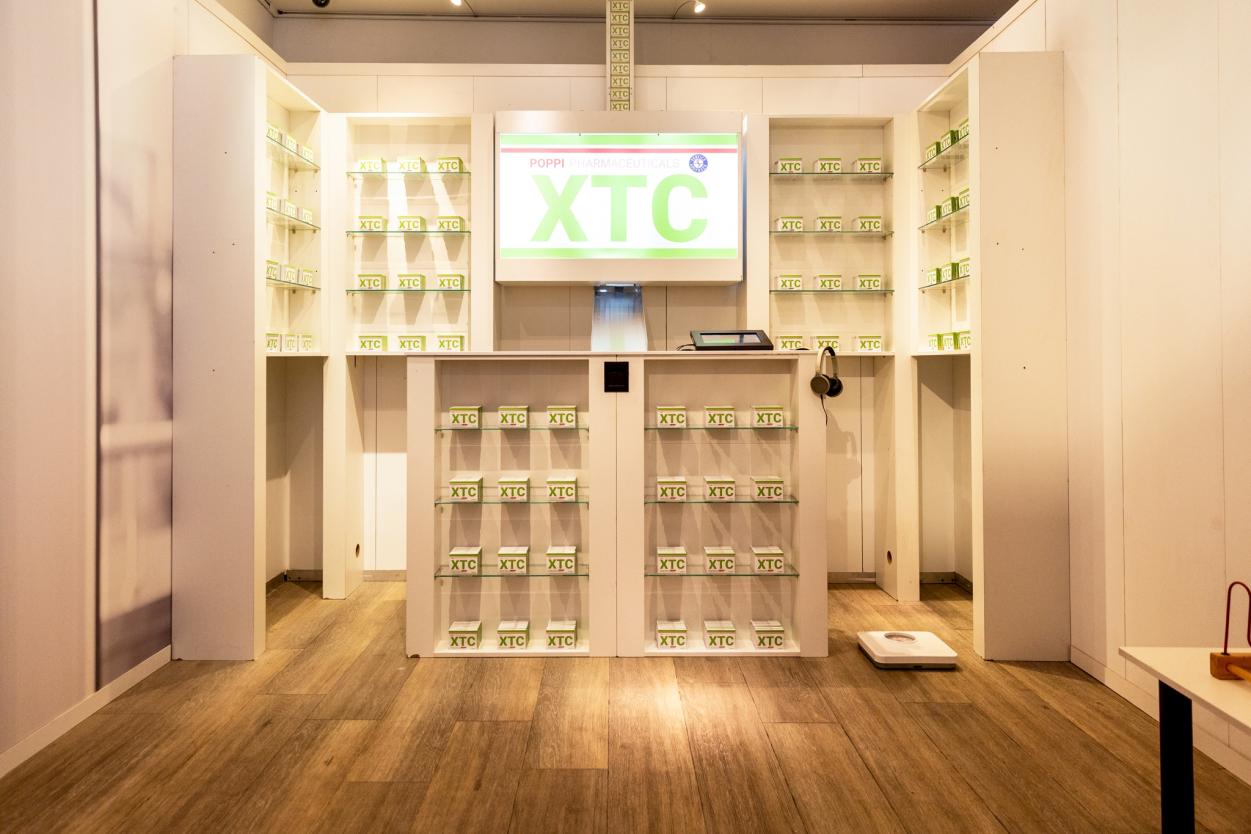
Imagine the government legalised and regulated ecstasy. It would be produced in a recognised lab, under strict conditions, so the user would know exactly how much active substance was in their pill, reducing the risk of harm. Next question: where should it be sold, and under what conditions? In a specialist shop, following the example of Dutch coffee shops? At the pharmacy? Or from a machine in a club?
An exhibition in Ghent, from 14 April to 15 May, puts forward these three possible scenarios in real-life settings: a shop, a pharmacy and a club. The initiative comes from researchers at VUB, UGent, Hogeschool Gent and the Smartondrugs movement.
VUB criminologist Steven Debbaut: “Visitors scan a code at the entrance to the exhibition with their phone. In every room, you’ll get information and can answer a number of questions. For example: do you think you should be able to buy ecstasy at the pharmacy with or without a prescription? How many tablets should the pharmacist be allowed to sell in one go? Should ecstasy be available in clubs? And should the club still be allowed to sell alcohol, given that the combination of alcohol and ecstasy can be very dangerous? We’ll share the results with policymakers and use them for academic research.”
How many people actually use ecstasy?
“Among students in higher education, a 2021 survey showed that 8 per cent had taken ecstasy at least once in the previous year. Among people aged 15 to 64 in the general Flemish population, it was 1.5 per cent, in survey from 2018. It’s a drug that’s mostly popular in nightlife and around electronic dance music like techno and trance.”
Is it dangerous?
“British and Dutch research looked at the damage caused to society and individuals by legal and illegal intoxicants. Both studies gave similar results. In the Dutch research, ecstasy was the 12th most damaging, cannabis 10th. The top five were crack, heroin, tobacco, alcohol and cocaine.”

"You must always see the 3 M's together: middel (substance), mens (person) and milieu (environment)"
So is it harmless?
“No drug is harmless. If you want to avoid the risks, you should avoid drugs. And if you’re going to start, it’s best to delay it as long as possible. The earlier you start taking a substance, the worse the impact on your brain – which is biologically mature around the age of 25 – and the greater the chance you will become dependent. Ecstasy is a drug that tends to be used occasionally – maybe a few times a year – and recreationally. The chance of becoming addicted to MDMA, the active ingredient, is small.”
According to the Smartondrugs website, that’s true for every drug
“For the majority of users – about 85% – intoxicants are purely recreational, regardless of the drug. About 15% display problematic behaviour. The number has remained largely stable for several years. A lot of drug use is temporary: people experiment and then decide it’s not for them, or it’s just a phase that they often stop without outside help.”
Who are the 15% of problem users?
“They are usually people with other issues. They may have grown up in poverty or with a difficult family situation, have undergone trauma or physical or sexual violence. That’s why we propose an alternative angle: treat intoxicants from a health perspective and focus on education, family support, equal opportunities, tackling poverty… Because those are the real root causes of problematic drug use.”
Do we focus too much on the product itself?
“We do. We would rather talk about the three Ms: not only the middel (substance) but also the mens (person) and milieu (environment). You have to consider them all together. The product is secondary. That’s why we also think the distinction between soft and hard drugs is arbitrary. Saying that cannabis is OK and the rest aren’t is a narrow way to look at intoxicants. Cannabis can be just as problematic as a ‘harder’ drug. If you take one product away from problem users, they’ll just replace it with another.”
"Regulation would make policy even stricter"
Thanks to Operation Sky, a large drug gang has been broken up. But you still have doubts about the war on drugs, is that right?
“Decades of repression have achieved very little. From time to time the supply falls, but that’s temporary and unsustainable. It’s also very expensive to fight major and minor crime, tackle nuisance and break up trafficking chains. About 62% of the resources in drugs policy are spent on repression, 34% on support, 3% on prevention and just 0.5% on harm reduction. We propose transferring some of the resources from repression to prevention, early detection, support and harm reduction. The goal of our drugs policy should be getting the proportion of problem users – that 15% – as low as possible.”
So regulation doesn’t mean that anything goes?
“No, on the contrary, the policy becomes stronger. Currently, everything happens under the radar, with no attention to safety, without controls on production, without age restrictions… Regulation makes substance use safer, and you take away the criminals’ business model.”
If you legalise and normalise a drug, doesn’t use increase? Won’t everyone start dropping ecstasy pills?
“Lots of people believe a ban on drugs works as a deterrent, but that’s not right. Comparative studies of drugs laws around the world have shown there is no link between stricter laws and a decrease or increase in drug use. It’s possible that regulation of ecstasy may lead to a limited increase in the number of people who use it. But you have to weigh this effect up against the reduction in damage to health. Above all, we could better restrict problematic use by lifting the ban. The quality of products would be better controlled and people would be able to find help more easily. That’s why it's important that legalisation and regulation are paired with investment in counselling and prevention.”
"There isn’t a simple connection between banning and usage"
What would you not want to see with a regulatory model like this?
Adverts for ecstasy. We are opposed to advertising drugs – we would also like a ban on publicity for alcohol. And we don’t think it’s a good idea for clubs to be able to sell ecstasy. It’s hard to make considered choices in the rush of a night out.”
In the Netherlands, you can freely buy cannabis in coffee shops. What can we learn from that?
“That a ban on drugs doesn’t automatically lead to reduced drug use. Young Dutch adults smoke less cannabis than their French peers, even though France takes a much more repressive approach. As I said, there isn’t a simple connection between banning and usage. There are lots of other factors at play, such as availability, advertising and the culture around the substance.”
What do politicians make of your proposal?
“There aren’t a lot of policymakers who are willing to have a rational conversation about it. Academic research, practical experience from support workers and the testimonies of users all point in the same direction: decriminalise drugs and treat it as a health issue. Because the current policy is not working. But calling for more repression is apparently easier to sell than saying ‘Let’s think about regulation and develop some models.’ The gap is still huge. With initiatives like the exhibition about ecstasy, we’re trying to make it a bit smaller.”

Fotograaf: Marieke de Bra
The criminologist calling for prevention and support
Steven Debbaut studied social work and criminology. He is the co-founder and spokesperson of Smartondrugs, an expert and citizen movement made up of academics, prevention workers, counsellors, treatment experts and other volunteers that advocates for reform of drug policy. His PhD thesis studied how police officers involved in monitoring drugs view the phenomenon of drug use. He is a postdoc researcher affiliated with the VUB.